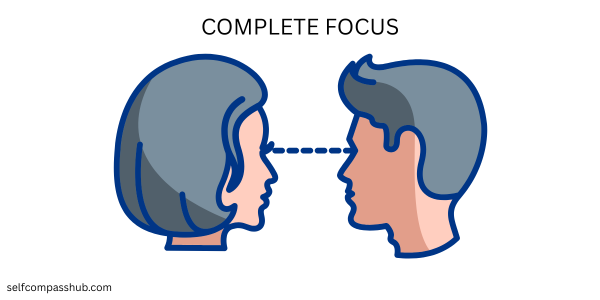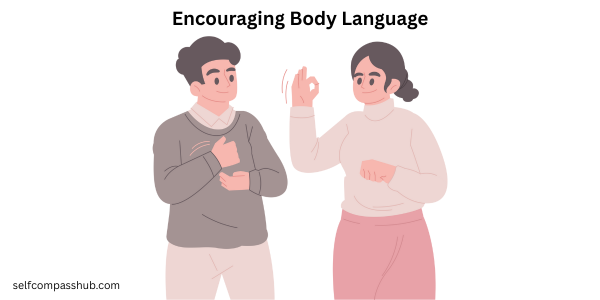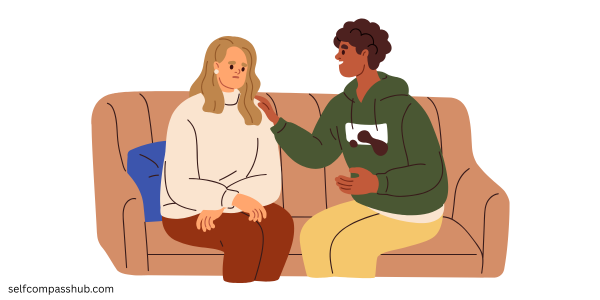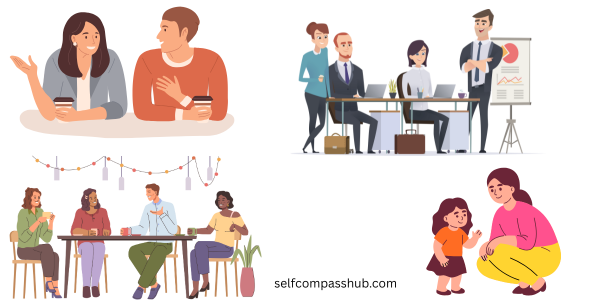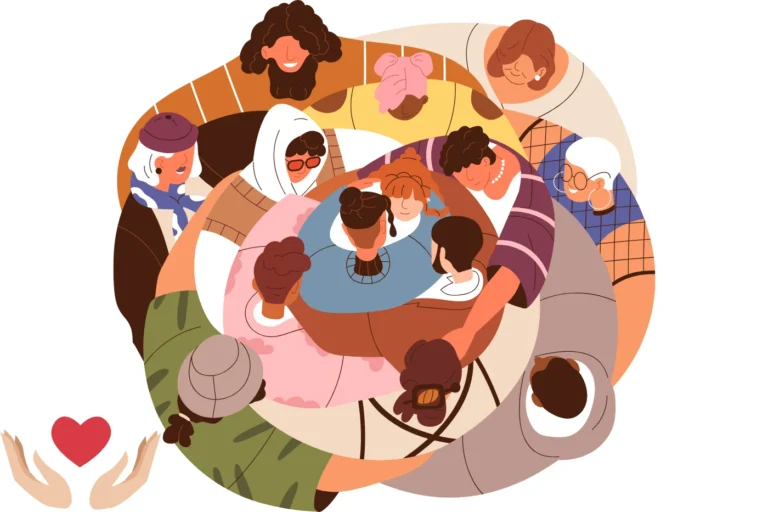In a world filled with constant distractions and the pressure to respond quickly, truly listening has become something of a lost art. Yet, the ability to listen actively and deeply is perhaps the most powerful tool we have for building meaningful connections with others.
Active listening goes beyond simply hearing words – it’s about being fully present, understanding the complete message being conveyed, and responding thoughtfully.
Whether you’re struggling with communication in your romantic relationship, trying to better understand your children, hoping to improve team dynamics at work, or simply wanting deeper friendships, mastering active listening techniques can transform how you connect with others.
What Is Active Listening?
Active listening is a conscious effort to hear not only the words another person is saying but to understand the complete message being sent, including the emotional context.
It involves giving your full attention to the speaker, showing that you’re listening, providing feedback, suspending judgment, and responding appropriately.
Unlike passive listening, where we might half-hear while thinking about something else or planning our response, active listening requires engagement, intention, and presence.
Core Techniques That Transform Relationships
1. Be Fully Present
What it means: Eliminate distractions and focus completely on the person speaking.
How to practice:
- Put away electronic devices
- Maintain comfortable eye contact
- Face the speaker directly
- Choose a quiet environment when possible
- Set aside what you’re doing to give undivided attention
Example: When your partner wants to discuss something important, rather than continuing to scroll through your phone or glance at the TV, put your device down completely, turn to face them, and mentally commit to focusing solely on this conversation.
2. Use Encouraging Body Language
What it means: Your nonverbal cues can communicate interest and openness or disinterest and judgment.
How to practice:
- Maintain an open posture (uncrossed arms and legs)
- Lean slightly forward
- Nod occasionally
- Offer affirming facial expressions
- Match your expressions to the emotional tone of what’s being shared
Example: When a colleague is sharing a challenging work experience, nodding occasionally and maintaining eye contact shows you’re engaged with their story, while a furrowed brow while looking at your computer would communicate disinterest.
3. Reflect and Paraphrase
What it means: Periodically summarize what you’ve heard to confirm understanding.
How to practice:
- Start with phrases like “So what I’m hearing is…” or “It sounds like…”
- Restate the core message in your own words
- Ask if your understanding is correct
- Focus on both content and emotional subtext
Example: “So what I’m hearing is that you’re frustrated because you’ve put a lot of effort into this project, but don’t feel your contributions are being recognized. Is that right?”
4. Ask Clarifying Questions
What it means: Use thoughtful questions to deepen understanding rather than to redirect the conversation.
How to practice:
- Ask open-ended questions that can’t be answered with yes/no
- Focus questions on understanding their perspective better
- Avoid questions that change the subject or center your experience
- Use phrases like “Tell me more about…” or “What was that experience like for you?”
Example: Instead of saying “That reminds me of when I had a difficult boss,” ask “How did that interaction affect how you feel about your role?”
5. Acknowledge Emotions
What it means: Recognize and validate the emotional content behind what someone is saying.
How to practice:
- Name the emotion you’re observing
- Validate that their feelings make sense given their perspective
- Avoid minimizing or dismissing emotions
- Don’t rush to problem-solving
Example: “I can hear how disappointing that was for you. It makes sense that you’d feel overlooked after putting so much work into the presentation.”
6. Practice Mindful Silence
What it means: Become comfortable with pauses and resist the urge to fill silence.
How to practice:
- Allow natural pauses in conversation
- Give the speaker time to gather thoughts
- Don’t interrupt or rush to fill quiet moments
- Use silence as a tool for reflection
Example: When someone is sharing something difficult and pauses, resist asking another question immediately. Instead, wait patiently, giving them space to continue when they’re ready.
7. Suspend Judgment
What it means: Listen without evaluating or formulating counterarguments.
How to practice:
- Notice when you’re mentally critiquing or dismissing
- Focus on understanding rather than agreeing or disagreeing
- Be aware of your biases and assumptions
- Remember that understanding someone doesn’t require sharing their view
Example: When listening to a political perspective different from yours, focus on understanding their reasoning and values rather than mentally preparing arguments against their position.
Implementing Active Listening in Different Relationships
With Your Partner
Active listening can transform romantic relationships by creating deeper emotional intimacy and reducing misunderstandings.
Set aside dedicated time for meaningful conversations without distractions.
When conflicts arise, use active listening to truly understand each other’s perspectives before attempting to solve problems.
With Your Children
Children thrive when they feel truly heard. Get physically on their level, use appropriate eye contact, and show genuine interest in their thoughts and feelings.
Practice patience with their communication style, which may include longer pauses or less direct expression.
In the Workplace
Active listening builds trust with colleagues and helps prevent costly miscommunications. It also demonstrates respect and can turn potential conflicts into opportunities for collaboration.
Make a habit of checking your understanding before acting on information.
With Friends
Friendships deepen when we listen to understand rather than to respond. Show up fully for important conversations, ask thoughtful follow-up questions, and remember that sometimes friends need empathy more than advice.
Benefits You’ll Experience
Practicing these techniques consistently leads to profound changes in relationships:
- Deeper connection as others feel truly understood
- Reduced conflict through fewer misunderstandings
- Increased trust as people feel safe sharing vulnerabilities
- Better problem-solving with clearer understanding of issues
- Stronger empathy as you regularly practice seeing others’ perspectives
- More fulfilling conversations that go beyond surface level
- Improved memory of important details about others’ lives
Common Challenges and How to Overcome Them
Challenge: Distractions
Solution: Identify your common distractions and proactively manage them. Put phones away, close browser tabs, or find a quieter space for important conversations.
Challenge: The Urge to Problem-Solve
Solution: Remind yourself that understanding should come before solutions. Ask explicitly if the person wants suggestions or just needs to be heard.
Challenge: Disagreement with What’s Being Said
Solution: Remind yourself that understanding someone’s perspective doesn’t mean agreeing with it. Focus first on fully comprehending before deciding how to respond.
Challenge: Time Constraints
Solution: Better to have a shorter, fully present conversation than a longer distracted one. Be honest about your time limitations and schedule a better time if needed.
Conclusion: Small Changes, Profound Impact
Active listening isn’t just a communication technique – it’s an act of respect and care. By giving others the gift of your full attention and working to truly understand their reality, you create space for genuine connection in a distracted world.
The techniques outlined above don’t require special training or dramatic personality changes – just a willingness to be more present and intentional in your interactions. Start by choosing one technique to practice this week, perhaps with a specific person or in a particular context.
As you develop your active listening skills, you’ll likely notice others responding differently to you as well. When people feel heard, they’re more likely to reciprocate attention, creating an upward spiral of better communication and stronger relationships.
What conversation will you approach differently today?


